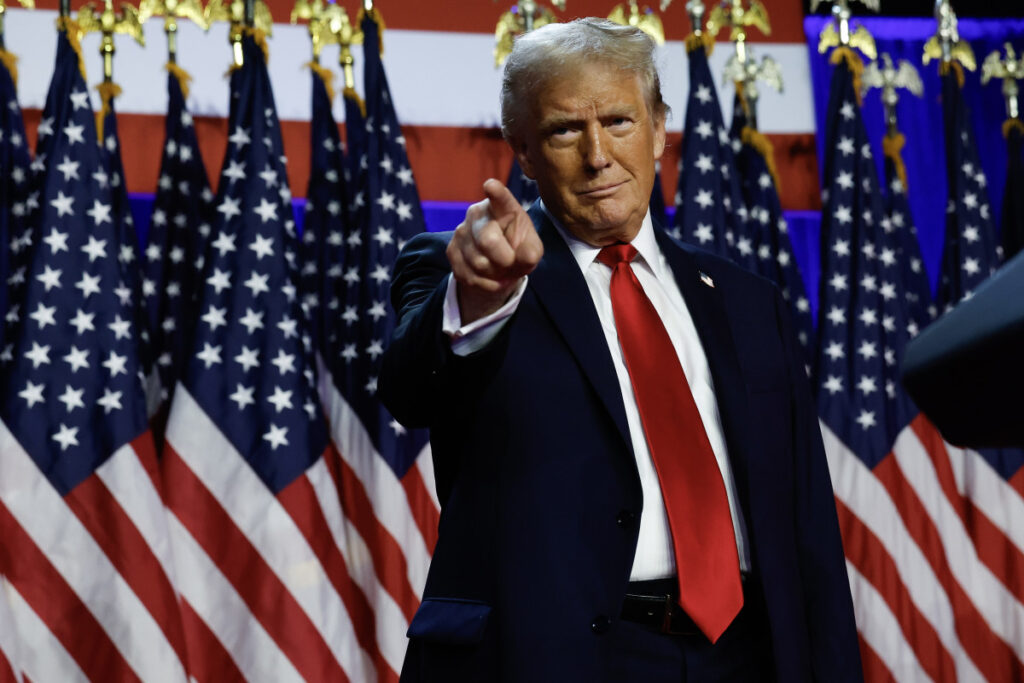Check back for updates throughout the trading day
U.S. equity futures edged lower Tuesday, while Treasury yields and the dollar resumed their recent march north, as investors hit pause on the post-election rally amid early concerns over the fate of U.S. policy towards China under President-elect Donald Trump.
Stocks finished modestly in the green on Monday, with the S&P 500 posting its 51st record closing high of the year and the Dow ending firmly north of the 44,000 point mark. Gains were pared in the late afternoon session, however, as investors worried that the market’s post-election rally, which has lifted the S&P 500 by around 5%, has stretched stock valuations beyond their fair value.
Bond markets are also back in business Tuesday, following yesterday’s Veterans’ Day observance, and higher Treasury yields are blunting some of the market’s enthusiasm for risk heading into tomorrow’s October CPI inflation report.
Benchmark 10-year note yields rose 5 basis points from last week’s levels and were marked at 4.349% heading into the New York trading session, with 2-year notes pegged at 4.302%.
The U.S. dollar index, meanwhile, was marked at a four-month high of 105.841 against a basket of six global currencies peers.
Some of the market’s caution was tied to the early composition of President Donald Trump’s cabinet, which is reportedly set to include China hawks Marco Rubio of Florida as Secretary of State, Mike Waltz as national security advisor and Robert Lighthizer as US Trade Representative.
“He’s an arch hawk on trade – although it should be no surprise for the market that he has been picked,” said ING’s global head of markets Chris Turner.
“We have assumed late 2025/early 2026 for the introduction and ratcheting up of tariffs, since it takes time to conduct trade investigations (but) some reports suggest tariffs could come earlier and could piggyback off of the results of existing trade findings,” he added.
Related: Analysts revisit Nvidia stock price targets with Q3 earnings in focus
Bitcoin is another asset moving directly as a result of Trump administration expectations, and traded just shy of the $90,000 dollar mark in overnight dealing, extending its post-election surge to around 30%.
On Wall Street, stocks futures suggest a modest early pullback at the start of trading, with the S&P 500 called 10 points lower and the Dow looking at a 55 point decline.
The tech-focused Nasdaq, meanwhile, is called 45 points lower, with Tesla (TSLA) falling 4.1% in premarket trading amid concern over its ties to China and Nvidia (NVDA) extending yesterday’s decline into a second session following a report that Taiwan Semiconductor was ordered by U.S. officials to stop high-tech shipments to China.
More Wall Street Analysts:
- Analysts reboot Snap stock price target after earnings
- Analysts reset Meta stock price target after earnings
- Analysts update Reddit stock price target after earnings
In overseas markets, Europe’s Stoxx 600 fell 1.05% in early Frankfurt trading, weighed down by stocks tied to China risk and a muted reading of German investor sentiment for the month of November.
A reading of regional and German state inflation pressures was largely in-line with analysts forecasts.
Overnight in Asia, China stocks slumped across the board, dragging the MSCI ex-Japan benchmark 2.04% lower into the close of trading, on concerns over the new Trump appointments and their impact on trade policy.
Japan’s Nikkei 225, meanwhile, snapped a three-day winning streak and ended 0.4% lower in Tokyo as chips stocks fell and trade tensions weighed on export stocks.
Related: Veteran fund manager sees world of pain coming for stocks
